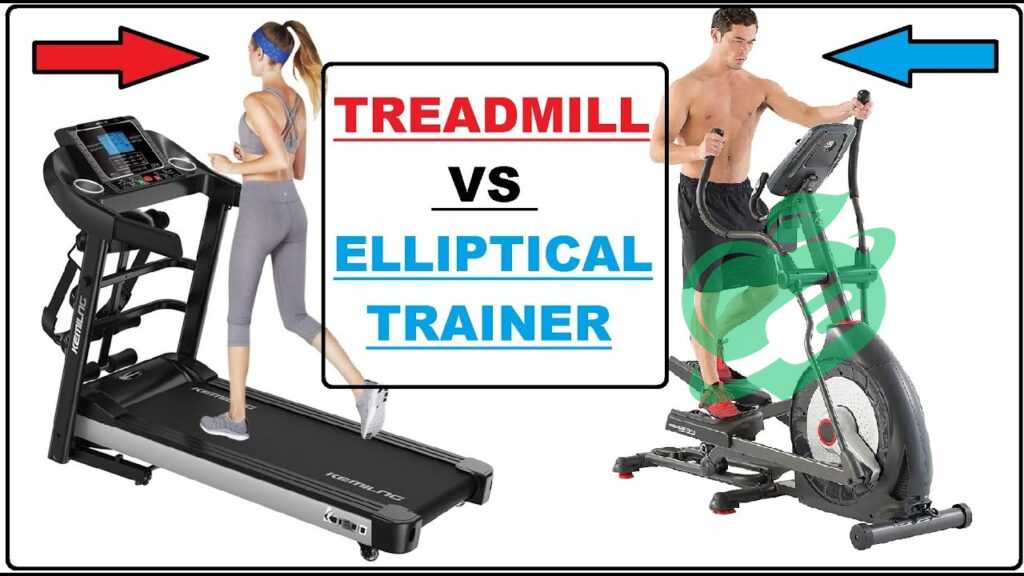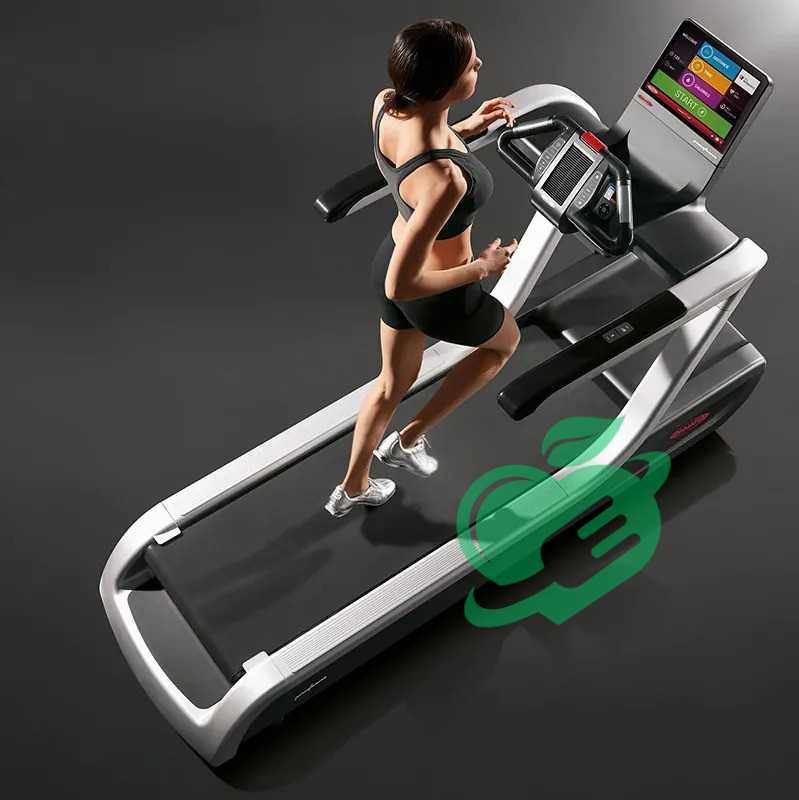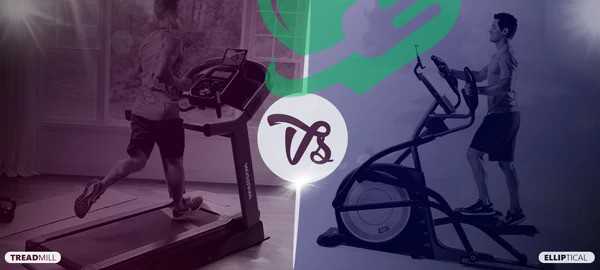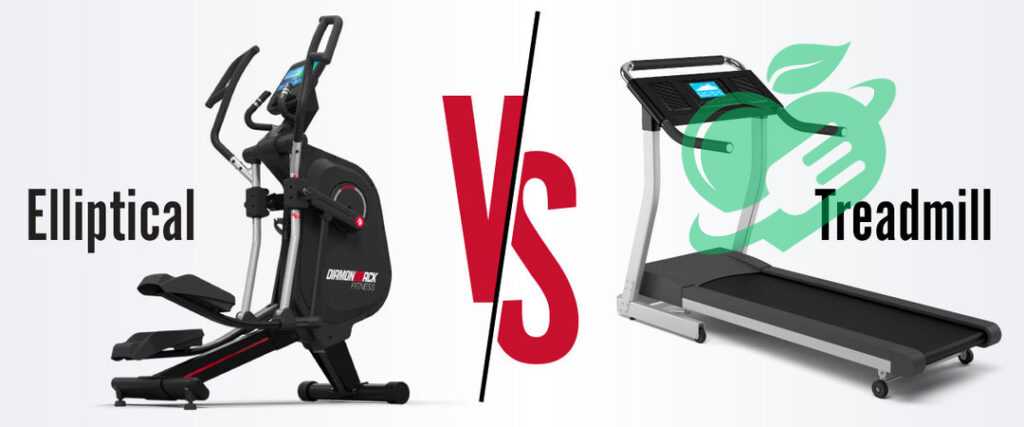
Introduction
Overview of Treadmill vs. Elliptical Machine
When it comes to home fitness, two of the most popular pieces of equipment that often take center stage are Treadmill vs. Elliptical Machine machines. Each machine offers a unique way to engage in cardiovascular workouts, making them staples in many living rooms and fitness centers. Treadmills, that trusty old staple, mimic walking, jogging, or running on a flat surface. They provide a variety of speed and incline settings, allowing users to customize their workout intensity. You can adjust your pace to suit your mood, whether you’re warming up with a leisurely walk or sprinting to challenge your limits. On the flip side, elliptical machines provide a low-impact alternative that combines the movements of running and stair climbing while being gentler on the joints. Many users are drawn to them because they offer a smooth gliding motion that reduces stress on the knees and hips. Both machines come equipped with workout programs and tracking capabilities, allowing users to monitor metrics like heart rate, distance, and calories burned. It’s almost like having a personal trainer at home!
Importance of Choosing the Right Fitness Equipment
Choosing the right fitness equipment is crucial for setting yourself up for success in your fitness journey. The right machine not only impacts your workout effectiveness but also influences your motivation and enjoyment levels. Selecting the wrong equipment can lead to lackluster workouts, potential injuries, or even giving up altogether. Here are some factors to keep in mind when choosing between a Treadmill vs. Elliptical Machine:
- Fitness Goals: What are you aiming for? If you’re looking to build endurance and enjoy running, a treadmill might be the way to go. However, if you’re focused on low-impact workouts that minimize joint strain, an elliptical could serve you better.
- Available Space: Consider the dimensions of your workout space. Treadmills can vary widely in size, while ellipticals tend to have a more compact footprint.
- Workout Preferences: Personal enjoyment matters! If you find running exhilarating, the treadmill might call to you. If you prefer a gentler approach, the elliptical could hold your attention longer.
- Budget: Is cost a major factor? Both machines come with different price points, and you’ll want to invest in one that fits your finances without compromising quality.
Ultimately, the best fitness equipment aligns with your preferences, goals, and lifestyle, making it easier to incorporate regular exercise into your routine. As the old saying goes, “The best workout is the one you’ll actually do!”

Treadmill vs. Elliptical: A Comparative Analysis
Comparison of Cardio Benefits – Treadmill vs. Elliptical Machine
When it comes to cardiovascular workouts, both treadmills and ellipticals have their unique advantages. Let’s dive into how these two machines stack up against each other in terms of cardio benefits. Treadmills allow for high-intensity workouts that can be tailored to individual fitness levels. They offer the option for interval training, where you can alternate between sprinting and walking, effectively boosting cardiovascular endurance and improving heart health. As a runner, it’s exhilarating to push the limits on a treadmill; even a short session can leave you feeling accomplished and invigorated. On the other hand, elliptical machines provide a comprehensive cardiovascular workout without the impact associated with running. The gliding motion ensures that users can maintain a higher exertion level for longer durations—after all, who doesn’t appreciate an option that retains their stamina? With built-in features that allow for reverse motion, ellipticals can target different muscle groups, adding variety to your workout.
Read also : 5 effective natural mixtures for slimming the buttocks
Impact on Joint Health and Injury Risks
One of the most significant factors to consider when selecting fitness equipment is the impact on joint health and injury risks. Running on a treadmill can put stress on the knees, ankles, and hips, especially for individuals who may have pre-existing joint issues. Although treadmills come equipped with cushioning systems designed to reduce impact, they don’t completely eliminate the risk of injury. Conversely, elliptical machines shine in this area. The low-impact mechanics of ellipticals help minimize stress on the joints, making them an excellent option for those recovering from injury or for individuals who are prone to joint pain. Many users report that they can train longer with less discomfort on an elliptical than on a treadmill, making it a safer choice for long-term fitness.
Calorie Burn and Weight Management
Calorie expenditure is often a key motivator for individuals investing in fitness equipment. Both machines can indeed help shed unwanted pounds, but they do so in different ways.
- Treadmill: Running generally burns more calories per minute than elliptical training, especially when users sprint or incorporate incline workouts. Studies suggest that a 160-pound person can burn approximately 732 calories in an hour of running at a 5-mph pace, depending on intensity and body weight.
- Elliptical: A similar workout on an elliptical can burn around 500-600 calories per hour. Although it may seem lower, the extended duration of workouts on an elliptical can make up for it, particularly for those who can run only for short periods due to discomfort.
Ultimately, both options can be effective for weight management, and the choice may come down to preferences and fitness levels. Whether you’re going for a treadmill dash or an elliptical glide, incorporating either machine into a balanced workout routine can help achieve your fitness goals.

Workout Variability and User Experience
Customizability of Workouts
Customizability plays a crucial role in keeping workouts fresh and engaging. Both Treadmill vs. Elliptical Machine offer varying degrees of customization, catering to users’ individual fitness preferences and goals. This feature can make all the difference for someone attempting to stay committed to their fitness routine. On a treadmill, users can:
- Adjust speed ranges from a leisurely walk to an intense sprint.
- Customize incline settings to mimic outdoor terrains, enhancing both strength and endurance.
- Create interval workouts by alternating between high and low intensities.
Such options can lead to better adaptations over time, as users can ramp up the challenge by modifying their sessions to prevent plateaus. Meanwhile, elliptical machines provide unique customizability features as well:
- Users can modify the resistance level to challenge different muscle groups.
- Many elliptical machines come equipped with preset workout programs that automatically adjust the resistance and incline throughout the session.
- The ability to pedal backward is not just a fun twist—it also engages new muscle groups and adds variety.
This adaptability is particularly crucial for those who might get bored easily; since workouts can evolve, users are less likely to fall into monotonous patterns.
User-Friendliness and Accessibility Features
In terms of user-friendliness, both machines aim to accommodate users of varying fitness levels. Treadmills often feature straightforward interfaces with large, visible buttons and clear displays, making it relatively simple even for beginners to start and adjust their workouts. Many models come with safety features, like emergency stop buttons, which offer peace of mind. Elliptical machines, in particular, tend to be designed with accessibility in mind.
- Many models feature lower step-up heights, making it easier for users, including those with mobility restrictions, to access the machine.
- Handlebars offer multiple grip options, enabling different user preferences and minimizing strain on the arms and shoulders.
Such thoughtful design choices foster a more comfortable workout experience.
Entertainment Options and Motivation
In today’s fitness landscape, staying motivated is more important than ever. Both treadmills and ellipticals come equipped with entertainment features designed to enhance the user experience.
- Treadmills: Many modern treadmills feature built-in screens that allow users to watch television or stream their favorite shows while exercising. This entertainment can make time fly during a long run.
- Ellipticals: These machines also offer built-in sound systems and even tablet holders to keep users engaged. Some allow for virtual training experiences, letting users feel like they’re jogging through beautiful landscapes.
Integrating entertainment into workouts can significantly increase motivation, making users eager to hop on the machine. Ultimately, whether opting for a treadmill or an elliptical, the workout variability and user experience play an essential role in building a consistent fitness regimen. Personal preferences and lifestyle will guide choices, ensuring that the experience is as enjoyable as the results achieved.

Space, Cost, and Maintenance Considerations
Size and Space Requirements – Treadmill vs. Elliptical Machine
When it comes to adding fitness equipment to your home, understanding the space requirements is essential. Both treadmills and ellipticals vary in size, and assessing your available room can make or break your workout experience. Treadmills generally require a larger footprint compared to ellipticals:
- Typical Size: Most standard treadmills take up about 6-8 feet in length and 2-3 feet in width.
- Foldable Options: Many modern treadmills come with foldable designs, allowing them to be stored upright when not in use—a great choice for smaller spaces.
On the other hand, elliptical machines are more compact:
- Typical Size: They generally range from 4-7 feet long and 2-3 feet wide.
- Wall Space: Ellipticals may require less vertical space, making them ideal for areas with lower ceilings.
For those with limited room, it’s crucial to measure your space and consider how each machine’s dimensions will fit in. Additionally, leaving some space around the machine is vital for safe entry and exit.
Initial Cost and Long-Term Investment – Treadmill vs. Elliptical Machine
Cost is another key factor to evaluate when deciding between a treadmill and an elliptical. It’s important to think critically about both the initial investment and long-term expenses.
- Treadmill Costs: Typically, a quality treadmill can range from $500 to $3,000 or more, depending on features and brands. High-end models with advanced technology often come with a hefty price tag.
- Elliptical Costs: Ellipticals can generally be found at a similar price range, typically from $300 to $2,500 or above, depending on optional capabilities, like programmable workouts and connectivity.
While the upfront costs are important, consider:
- Long-term Investment: If you anticipate regular use, investing in a higher-quality machine may save you money down the line.
- Warranty Considerations: Many treadmill and elliptical models come with warranties, ranging from 1 to 10 years, which can also indicate long-term reliability.
Maintenance and Durability Factors – Treadmill vs. Elliptical Machine
Maintenance is essential for ensuring that your fitness equipment remains in good working order over time. Both treadmills and ellipticals have their unique upkeep requirements.
- Treadmills:
- Regularly lubricate the belt to avoid friction.
- Check for loose bolts and alignment issues every few months.
- Keep the surface clear of dust to extend the lifespan of the machine.
- Ellipticals:
- Wipe down handlebars and foot pedals to prevent sweat accumulation.
- Inspect moving parts for wear and tear periodically.
- Check the resistance mechanism to ensure proper functioning.
Durability plays a significant role in your investment. Higher-end models tend to be built with sturdier materials, which can withstand rigorous workouts. By considering space, cost, and maintenance factors, users can make informed decisions when choosing between a treadmill and an elliptical. This thoughtful approach ensures that the selected equipment will cater to personal fitness needs while fitting seamlessly into one’s lifestyle.
Read also : Apply the diet now in the simplest keto ways

Expert Recommendations and Fitness Goals Alignment
Fitness Professionals’ Insights – Treadmill vs. Elliptical Machine
When it comes to choosing the right fitness equipment, tapping into the insights of fitness professionals can be incredibly beneficial. Personal trainers and fitness coaches often emphasize that the best machine is one that aligns with your lifestyle and keeps you motivated. Many experts recommend assessing your fitness level and preferences before making a decision. For instance, a personal trainer might suggest:
- Treadmills for individuals who enjoy running or walking outdoors and want a high-intensity workout option.
- Ellipticals for those who prefer a low-impact alternative that still offers effective cardiovascular training.
Additionally, seasoned trainers often highlight the importance of variety. Regularly alternating between equipment can lead to better results, as it engages different muscle groups and keeps workouts fresh. One trainer even shared a personal anecdote about a client who initially loved the treadmill but switched to the elliptical for cross-training, ultimately improving both strength and endurance. This adaptable approach can lead to more consistent workouts and a stronger commitment to fitness goals.
Matching Equipment to Specific Fitness Goals
Alignment between personal fitness goals and equipment is crucial to achieving success. Here are ways to match your equipment choice with specific objectives:
- Weight Loss: If shedding pounds is the priority, high-calorie-burning options like treadmills may be more beneficial for those who can handle the impact. Incorporating interval training maximizes calorie burn.
- Endurance Train: For runners aiming to prepare for a marathon, a treadmill allows them to simulate race conditions, such as varying speeds and inclines.
- Joint Health and Rehabilitation: If the focus is on rehabilitation or minimizing joint strain, elliptical machines are often the recommended choice. Their smooth motion allows users to maintain fitness without risking injury.
- Cross-Training: For those looking to enhance overall fitness without overstraining specific joints, alternating between treadmills and ellipticals offers balanced training.
Finding the Perfect Fitness Companion – Treadmill vs. Elliptical Machine
Ultimately, finding the right fitness companion is about more than just selecting a machine; it’s about creating a supportive environment that fosters motivation and enjoyment. Fitness professionals often advise individuals to:
- Try Before You Buy: Where possible, test both machines. Many gyms or fitness stores allow for test runs, letting users feel how each machine handles.
- Set SMART Goals: Define Specific, Measurable, Achievable, Relevant, and Time-bound objectives. Once you have clear goals, you can choose the equipment that best supports them.
- Establish a Routine: Once you’ve chosen your equipment, create a workout routine that integrates it consistently.
- Ensure Enjoyment: Ultimately, you need to enjoy the process. Whether it’s listening to your favorite podcast on an elliptical or watching a show while walking on a treadmill, finding joy in your workouts will keep you coming back for more.
By integrating expert insights and aligning equipment with goals, users can ensure that their chosen fitness companions not only meet their needs but also inspire a lifelong commitment to health and well-being.

Conclusion
Recap of Key Differences and Considerations
After exploring the various aspects of treadmills and ellipticals, it’s clear that both machines offer unique benefits tailored to differing fitness needs. As you look back on the points discussed, here’s a quick recap of the key differences and considerations:
- Cardiovascular Benefits: Treadmills excel in high-intensity workouts, suiting those who thrive on running and jogging. In contrast, ellipticals provide a low-impact alternative that also targets cardiovascular fitness without straining the joints.
- Joint Health and Injury Risks: While treadmills can exert more stress on the joints, ellipticals offer a gentler workout option, making them ideal for those with joint concerns or injury recovery.
- Workout Variety and Customization: Both machines allow users to customize workouts, but treadmills provide more opportunities for speed and incline variations, whereas ellipticals often include preset programs tailored for diverse workout goals.
- Space, Cost, and Maintenance: Treadmills usually require more space, especially if they’re non-foldable, while ellipticals tend to fit better in smaller areas. Pricing varies, but both can require a significant upfront investment and maintenance costs.
By understanding these differences, users can evaluate which machine aligns best with their personal fitness goals and environments.
Making an Informed Decision for Your Fitness Journey
Making an informed decision about fitness equipment comes down to understanding your individual needs and lifestyle. Reflection on personal fitness goals, available space, budget, and preferences is crucial in selecting the perfect machine. Here’s how you can solidify your choice:
- Evaluate Your Fitness Goals: Are you aiming for weight loss, endurance, joint health, or general fitness? Clearly defining your goal helps narrow down your options.
- Consider Your Space: Take time to measure your workout area, accounting for both the machine’s footprint and the necessary clearance for safe use.
- Budget Wisely: Look not just at the initial costs but also at long-term expenses related to maintenance and durability. Consider investing in higher-quality machines that can withstand regular use.
- Seek Professional Guidance: If unsure, consulting fitness professionals or personal trainers can provide you with tailored insights based on your goals and capabilities.
- Try Before You Commit: Whenever possible, visit gym facilities or fitness equipment stores to test both options. Feeling the machines in action can make a significant difference in your decision.
Remember, the best choice is not just a matter of features or price; it’s about finding what resonates with you and encourages a sustainable fitness routine. Embrace the opportunity that comes with selecting the right equipment, and may your fitness journey lead to enjoyable workouts and lasting health benefits!



